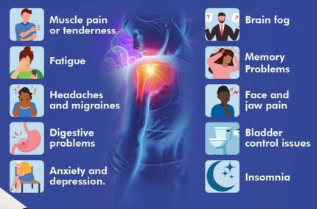Decoding the Diagnosis: Confirming Fibromyalgia with Precision
Decoding the Diagnosis: Confirming Fibromyalgia with Precision
Fibromyalgia is a complex and often misunderstood condition characterized by widespread musculoskeletal pain, fatigue, and cognitive disturbances. Confirming a diagnosis requires a meticulous approach, as there is no definitive laboratory test for fibromyalgia. Instead, healthcare providers rely on a combination of patient history, symptom evaluation, and exclusion of other conditions.
Understanding Fibromyalgia
Fibromyalgia manifests through a constellation of symptoms, including chronic pain, sleep disturbances, and cognitive impairments. These symptoms often overlap with other disorders, making diagnosis challenging. The absence of specific biomarkers necessitates a thorough clinical evaluation to confirm the condition.
Initial Clinical Assessment
The diagnostic journey begins with a comprehensive clinical assessment. Healthcare providers gather detailed information about the patient’s medical history, symptom onset, and the impact on daily functioning. A physical examination is conducted to assess pain distribution and identify any tender points.
Diagnostic Criteria
The American College of Rheumatology (ACR) has established criteria to aid in the diagnosis of fibromyalgia. These criteria focus on the Widespread Pain Index (WPI) and the Symptom Severity Scale (SSS).
Widespread Pain Index (WPI)
The WPI assesses the number of areas in the body where the patient has experienced pain over the past week. A higher WPI score indicates more widespread pain.
Symptom Severity Scale (SSS)
The SSS evaluates the intensity of symptoms such as fatigue, unrefreshing sleep, and cognitive difficulties. Patients rate the severity of these symptoms on a scale, contributing to the overall assessment.
A diagnosis of fibromyalgia is considered when:
- WPI score is ≥7 and SSS score is ≥5, or
- WPI score is between 3–6 and SSS score is ≥9
Additionally, symptoms should have been present at a similar level for at least three months, and there should be no other disorder that would otherwise explain the pain.
Exclusion of Other Conditions
Since fibromyalgia shares symptoms with various other conditions, it’s crucial to rule out alternative diagnoses. Healthcare providers may order laboratory tests to exclude conditions such as:
- Rheumatoid arthritis
- Lupus
- Hypothyroidism
- Multiple sclerosis
These tests help ensure that the symptoms are not attributable to other underlying medical issues.
Role of Tender Points
Historically, the presence of tender points was a key diagnostic criterion for fibromyalgia. However, the emphasis has shifted towards a more holistic assessment of symptoms, as tender point examination can be subjective and variable.
Emerging Diagnostic Tools
Advancements in medical research have led to the development of new diagnostic tools aimed at improving accuracy. One such tool is the FM/a Test, which analyzes immune system markers associated with fibromyalgia. While promising, these tests are still under evaluation and are not yet widely adopted in clinical practice.
Importance of a Multidisciplinary Approach
Confirming a diagnosis of fibromyalgia often involves collaboration among various healthcare professionals, including rheumatologists, neurologists, and primary care physicians. This multidisciplinary approach ensures a comprehensive evaluation and facilitates the development of an effective management plan.
Patient Education and Support
Educating patients about fibromyalgia is essential for effective management. Understanding the nature of the condition empowers patients to engage actively in their treatment plans, adopt lifestyle modifications, and seek appropriate support resources.
Conclusion
Confirming fibromyalgia requires a nuanced and patient-centered approach. By integrating clinical assessments, standardized criteria, and the exclusion of other conditions, healthcare providers can arrive at an accurate diagnosis. Ongoing research and emerging diagnostic tools hold promise for enhancing the precision and efficiency of fibromyalgia diagnosis in the future.



